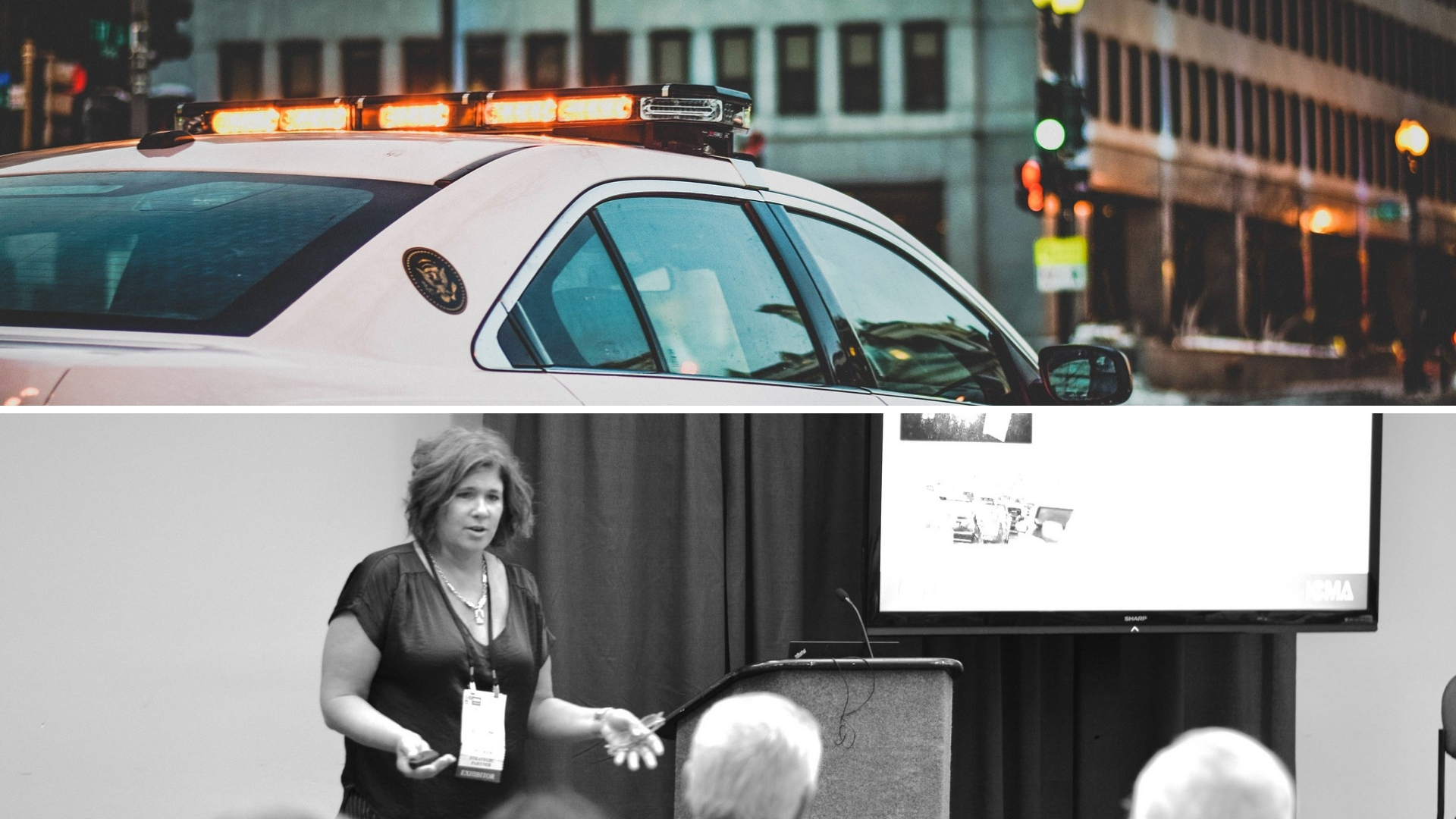New Police Study Shows Significant Changes in American Opinions on Public Safety Services
By Brian Smith on January 1, 1970

A recently published police study reveals sweeping changes in resident satisfaction and experiences with law enforcement in their communities.
- By Brian Smith, Graphics by Parker Quinn -
Residents across the nation are asking for more constructive relationships with police, after a year greatly marked by social unrest over reports of police violence.
In general, Americans say they want police to increase connections with the community and find better ways of collaborating with residents. They also expect more access to information about police services and better transparency within police departments.
This shift in rising expectations for community-centered policing is one of many results from a 2020 study by National Research Center (NRC) at Polco. Analyses of The National Police Services Survey (The NPSS) results examine residents’ evolving opinions and experiences with local law enforcement.
In general, residents across the nation show less satisfaction with law enforcement in several key areas. Those areas include sense of safety, quality of service, trust in police and more.
Residents Propose Changes for Community-Centered Policing
There is good news, however. As residents signal to police that they desire change, they also identify several key solutions.
These survey results can help law enforcement officials and local government leaders understand and meet the needs of residents. Findings from the study can also help local police departments achieve a community-centered policing model.
 “We’re noticing there is more mistrust of the police than we’ve seen in the past. That’s something we know we need to work on as a nation,” said Michelle Kobayashi, Sr. VP of Innovation for Polco. Kobayashi is a leading survey scientist with more than two decades of experience.
“We’re noticing there is more mistrust of the police than we’ve seen in the past. That’s something we know we need to work on as a nation,” said Michelle Kobayashi, Sr. VP of Innovation for Polco. Kobayashi is a leading survey scientist with more than two decades of experience.
“The results point to residents wanting much more of a relationship with police. They want police departments to communicate, collaborate and make things more equitable and transparent,” she said.
Data Come From The National Police Services Survey
Experts in the fields of public opinion research and law enforcement developed The NPSS to help police leaders move forward with their communities. Leaders from the Bureau of Justice Assistance (BJA) Executive Session on Police Leadership (ESPL) also helped guide the creation of The NPSS.
Data analyzed for the nationwide study come from this survey conducted in 2018 and again in 2020. NRC researchers developed this as a benchmarking survey. It gives insight into resident views on community safety and values, helping align police and public priorities. Data from these surveys represent the opinions of millions of residents across the United States.
“The differences between the years were surprising,” Kobayashi said. “When we began analyzing the data, we expected to see a change in the resident perceptions in 2020. But we did not expect the change to be so dramatic. These data demonstrate why local governments need to assess the relationship between their police and residents and identify ways to strengthen that connection.”

A Strained Relationship with Community
Researchers conducted the 2020 study as news about protests over police violence and calls for reform spread across the country.
“The media and national events are powerful influencers when it comes to resident perceptions,” Kobayashi said. “National issues and trends can have significant impacts on local perceptions and we believe that is what we’re seeing here.”
Data show the relationship between law enforcement and the community has strained. And publicized tensions have likely influenced those differences in the survey data. In fact, most ratings of police and public safety services changed between 2018 and 2020. For instance, residents previously rated the overall quality of police services highly (79%), but that figure dropped by 23 percent in 2020.
Two of the major factors contributing to that drop are how police communicate with residents and the way in which police are perceived, said Chief Anthony Holloway of the St. Petersburg, Florida Police Department. Police need to be seen in the community being proactive instead of only responding to a crisis, he said.
 Chief Holloway is a thought-leader in law enforcement with well over 30 years experience. He’s taught best practices for equitable, community-centered policing to government and community organizations nationally and internationally. He says it’s up to police departments to lead the way for positive change.
Chief Holloway is a thought-leader in law enforcement with well over 30 years experience. He’s taught best practices for equitable, community-centered policing to government and community organizations nationally and internationally. He says it’s up to police departments to lead the way for positive change.
“Much of what the community knows is what they see on television,” Holloway said. “That’s a perception that turns into reality when an officer only comes into the community to take someone to jail. So we have to change that perception. Law enforcement is there to help you.”
Changing Perceptions Affect Community Desirability
Along with the decrease in police service ratings, residents changed their opinions of how safe they feel in their neighborhoods.
How residents perceive their own level of safety greatly contributes to how desirable a place is to live, according to analyses of The National Community Survey (The NCS). For nearly two decades, Americans responding to The NCS consistently rank safety as the most important factor for a livable community.
On The NPSS in 2020, residents reported feeling less safe overall than they did in 2018. Many residents also rated their communities lower as desirable places to live and raise children.
In both surveys, about half of residents said they had contact with law enforcement within the year prior. In 2018, eight in 10 residents rated their interactions with police positively. In 2020, that decreased to six in 10.
“What we see is that in addition to reporting less positive interactions with police, residents’ trust in law enforcement has been damaged,” Kobayashi said. “It is important for police leaders to understand those trends if they want to improve them.”

Residents’ Expectations Regarding Ethics and Trustworthiness
Residents reported less trust in law enforcement in 2020 compared to 2018. They also reduced ratings given to police officers for measures of ethics.
Residents rated several aspects of trust in police lower. Aspects that saw significant declines include acting within the law, trustworthiness, acting in the best interest of the community, and using appropriate force. In many cases, the study finds decreases of 20 percent or more in these areas.
Less than half of respondents (46%) in 2020 felt that their local police department or sheriff’s office did an excellent or good job holding officers accountable for their actions.
Holloway said police departments should engage the community more about officer accountability and discipline. For example, St. Petersburg Police have a citizen review committee that oversees discipline for officers.
“People hold us at a higher standard, but they forget sometimes that we are human like they are,” Holloway said. “So it comes down to educating the officers and also educating the community.”
Praise for Core Services, But Community Outreach Needs Improvement
The study also assessed the quality of specific policing services. All ratings were 13% to 28% lower in 2020 compared to 2018.
The biggest slide in results came when respondents considered how police and residents collaborate to make neighborhoods safer. Residents dropped their approval rating of that factor from 67% to 39%.
In both studies, residents gave the highest ratings to quick emergency response, maintaining public order, and assisting victims of crime.
The issues residents rate lowest include inviting community input, responding to interactions with people who are homeless, and providing public information and education.
“The story that this data tells is that police generally are doing a good job serving the community’s core public safety needs. But more work must be done in community outreach and involvement,” Kobayashi said.
Residents Readjust Rankings for Crimes
Between 2018 and 2020 there were only minor changes in the community safety issues residents ranked as problems.
In both studies, residents ranked 34 public safety problems and the level of impact on their community.
In both years, drug abuse ranked as the top problem, while DUIs and domestic violence were also among the top five. In 2018, the top five list also included traffic problems and homelessness. In 2020, child abuse and human trafficking ranked among the top five problems.
Three problems saw modest changes in residents’ rankings. Respondents ranked domestic violence 11 percent higher and child abuse ranked 15 percent higher. Gun violence, poorly kept houses and disorderly conduct all ranked lower as problems.
“Of all the areas of public safety that we examined, these rankings changed the least,” Kobayashi said. “To me this indicates broad agreement in the types of crime that residents feel impact their communities most. What has changed is where residents would like police to focus their efforts.”
Amid Changing Views, Priorities Change
Analysis between the two studies shows residents are changing their priorities for public safety.
Residents rated seven of nine priorities as less important in 2020 than in 2018. Issues such as traffic enforcement, drug enforcement, school safety and controlling juvenile crime all dropped by 20 percent in importance.
In 2020, residents said they wanted police to be more connected with the community, have better access to police and police-related information, and demonstrate better transparency.
“In order for police departments to meet these requests, they need to make sure they have the right tools, processes and resources,” Kobayashi said.
Bringing Residents and Police Together
It is crucial residents understand the enormous challenges modern day police departments face, Kobayashi said. Residents should be educated about issues such as hiring, resources, training, and new technologies (like body cams).
Understanding public safety challenges will help to unite residents and law enforcement and bring them closer together to find solutions. But key to that process is reaching out to disenfranchised residents, Kobayashi said.
“Police departments should work really hard with groups in the community that represent diverse residents,” she said. “Invite some of those folks not often heard to participate in decisions about community safety and policing. Make sure they are at the table when you’re deciding how to utilize resources, how to make new policies, and how to evaluate police performance.”
Involving the community more across all facets of law enforcement can improve trust, feelings of safety, and general satisfaction with law enforcement efforts. Kobayashi urged police departments to do a baseline assessment to better understand local voices, opinions and needs. Strategic planning involving residents and stakeholders can help align community priorities with resources as well as strengthen much needed relationships.
“Action plans related specifically to improving the relationship between police and residents are also a good idea for many communities,” she said.
These data provide a blueprint for how public safety leaders can both improve community relations and restore public trust in law enforcement.
“These data indicate there’s room for improvement, but we’re optimistic that police departments can create the kind of connection residents seek,” Kobayashi said. “Resources like The NPSS create an opportunity for police to survey residents in their own communities. Having that local data is crucial to moving your community forward.”
For more information, or to conduct The National Police Services Survey click here.
Related Articles
Popular posts
Sign-up for Updates
You May Also Like
These Related Stories

Police Study Report: Opinions of Law Enforcement Differ Between Races

Examining Public Opinion on Today's Safety Priorities






